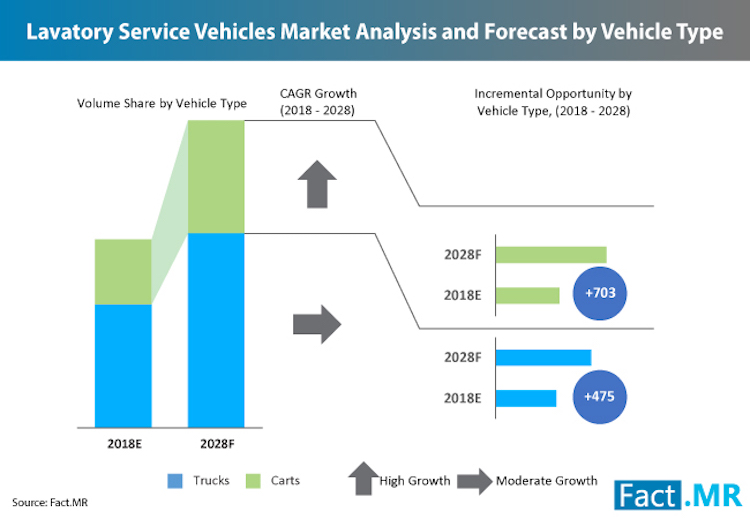
Sales of vehicles used to remove waste from the aircraft toilet were expected to double over the coming decade, a new report says.
Global market research company Fact MR has predicted in its study of the lavatory service vehicle (LSV) market that sales would grow at a compound annual growth rate (CAGR) of five per cent between 2018 and 2028 in the Asia-Pacific region (excluding Japan).
While tales of blue toilet ice falling to the ground for aircraft flying overhead, amorous passengers turning the toilet into their private boudoir, sly smokers lighting up in the cubicle, and myths about lavatories sucking in bottoms have for years provided light fodder for the tabloids, the LSV industry was a serious, safety-focused business.
Fact MR said the expected global growth in airline passenger traffic and the increasing number of aircraft to meet that demand meant more aircraft toilets would need to be emptied, more people trained in the precise business of operating LSVs – a spillage could cost an airlines thousands of dollars – and there was more pressure to make those vehicles environmentally and economically efficient.
The study found that LSVs with smaller capacities in the 189-379 litre range were likely to increase rapidly in coming years as airlines looked to meet the rising demand for domestic travel.
This, it said, was resulting in significant changes in ground service equipment (GSE) management systems being developed by airports, including the LSV market, in response to the growth in smaller aircraft.
Further, it noted that with the increasing number of smaller aircraft, airports were aiming to cut down on the resources expended in GSE as part of their bid to implement a low-cost business model.
“This may cause a palpable shift in demand for LSVs with larger capacities to those with smaller capacities in upcoming years,” the report said.

Because of stringent rules surrounding ground support personnel operating the vehicles, LSV manufacturers were looking to introduce innovative features to enhance safety such as rear-view camera systems for safe navigation on busy airfields, as well as real-time visuals and audio alerts on operational errors, the study found.
It also reported a majority of manufacturers in the LSV market were adopting strategies to design vehicles that had maximum control over the quantity of fluids to be transferred, thereby eliminating the risk of accidental overfilling.
The vehicles also used UV-resistant, crack-resistant, and rust-proof material for manufacturing batching tanks in a bid to make them safer and more efficient.
As stringent environmental regulations pushed airport authorities towards zero-emission vehicles in the GSE market, the study pointed to the push for electric LSVs.
It noted the International Council on Clean Transportation reported 22 airports in the United States had electric GSEs, including LSVs. It also said that large LSV manufacturers, such as Vestergaard Company, were introducing electrically-operated vacuum toilet service units to meet rising demand for environmentally-friendly lavatory service vehicles across the world.
Toilet facts:
















fleuriste ville de québec
says:I know this site presents quality based posts and extra material, is
there any other website which offers these stuff in quality?